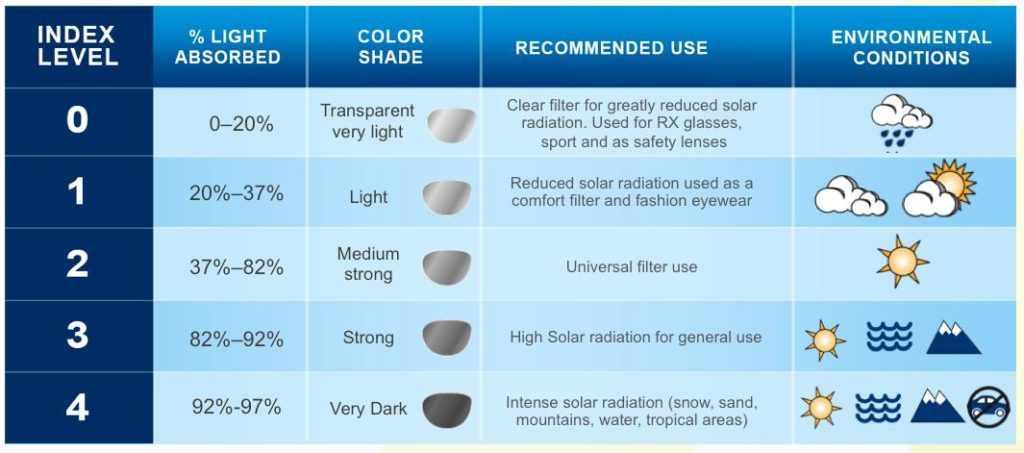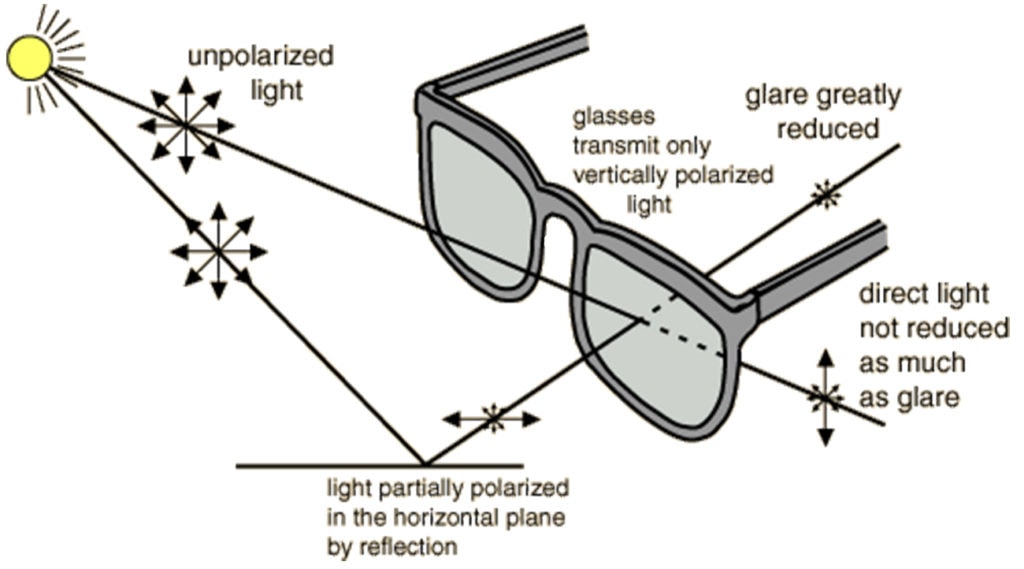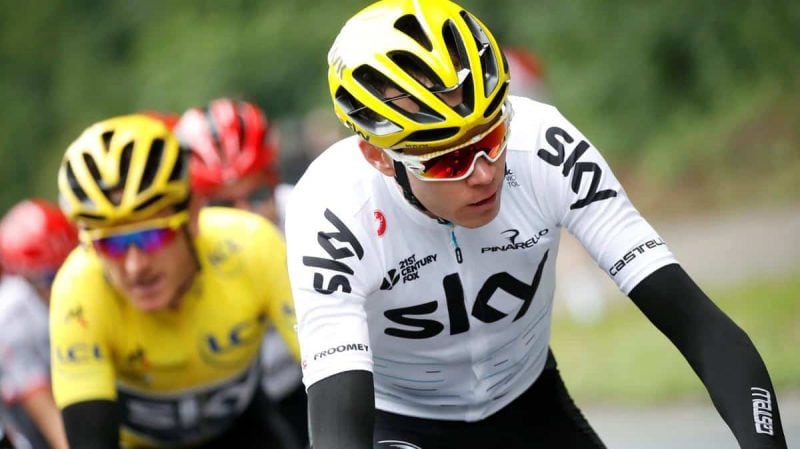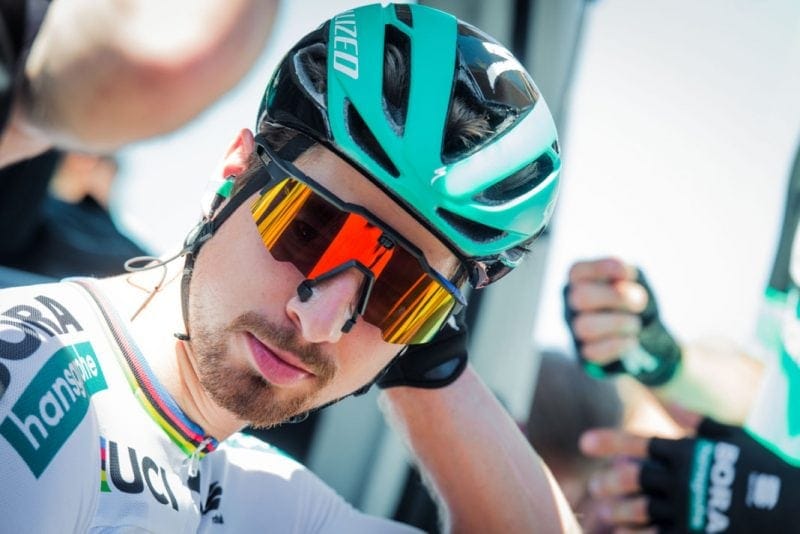A Cyclist’s Guide to Sunglasses
While most sunglasses seem quite straightforward, there is actually a difference in them especially when it comes to cycling. They provide protection against the sun and elements, but the difference lies in how this is achieved.
There are things like the type of lens used for the various light conditions; some cyclists ride in the dark while still wearing glasses. Or when it’s raining, the glasses prevent the raindrops from hitting your eyes.
Besides that, you’ll also need to consider how they fit, breathability, and ventilation among others. We’ll discuss all these in detail below.
On This Page
Which Type of Lens to Use?
Ideally, you should be using a lens that suits your riding conditions. For some, that might mean having several lenses, or even several sunglasses if constantly swapping lenses is not your thing.
The main difference between lenses is mainly their light transmission properties, which is the amount of light allowed through the lens and their tints. Some have additional features like polarized and photochromic.

Standard Lens
These are found in the majority of cycling sunglasses such as the Oakley Sutro and 100% S3. They typically have a light transmission between 15% to 30%.
This would mean that they’re suited for sunny days especially during the summer.
They also come in a variety of tint colors to suit your personal preference. For example, SunGod allows you to fully customize not only the lens color but also the frame and earsocks colors to your liking.
Photochromic Lens
These are arguably the most versatile lens from my experience. They’re also sometimes referred to as transition lenses.
The lens brightens and lightens according to the level of UV to suit your surroundings and have a light transmission between 20% during bright daylight and up to 70% during low light conditions.
With that, you can use it for most of your riding conditions from dusk to dawn. I find them most useful during dusk rides where the rides start before sunrise and finish just after sunrise, especially during the shoulder months.
The Oakley Radar EV is among the more popular photochromic choices among cyclists today for its high-quality build.
Polarized Lens

They help to block reflected lights from the road surface, car hoods, or road signboards and hence reduce the glare, making it more comfortable for your eyes.
Glare is caused by horizontally reflected lightwaves. A polarized lens filters these out and only allows the vertical light waves to pass through.
Clear Lens
These are meant for use riding in dark or low light conditions. They have a light transmission of almost 100%. Oakley has a specific lens called the Oakley Prizm Low Light which is designed to be worn in these types of situations.
Geek Tip : Photochromic lenses are the most versatile lens which could suit most of your riding conditions.
Orange/Brown Lens
Besides clear lenses, orange/brown lenses are another popular choice for those who ride in low light conditions. The orange/brown tint helps to brighten up the road ahead of you.
Are the Lenses Interchangeable?
Sunglass frames that support inter-changeable lens are much more versatile. You can easily swap out for a lens that suits the riding conditions of the day.
Some models come with a spare lens while for others you’ll need to buy them separately. For example, the replacement lenses for Oakley Flight Jacket are widely available in a variety of color and tint choices.
Geek Tip : Take extra caution when you’re swapping out lenses, as the frame material can be thin and fragile.
How to Ensure A Proper Fit?
Each of us has different face shapes; length, width, and nose bridge height. It can be a big task to find a sunglass that universally fits the majority of cyclists.
That’s you often see cyclists with different sunglasses and also a lot of models out there to choose from.
Let’s take a look at some fit factors to consider.
- Nose Bridge. As with anything you wear, having a proper fit is crucial. The nose bridge should sit firmly and securely on your nose. If the nose bridge is too wide, the glasses will easily slide down and if it’s too small, you’ll constantly feel the pinching effects which will be uncomfortable.
- Frame Width. Cycling sunglasses are specifically designed to fully cover and protect your eyes from angles. The frames are also designed in such a way that they don’t get in your way to give you a wide field of view.
Geek Tip : Some brands will have an Asian Fit, Junior or Small version for cyclists with smaller faces.
Are there Air Vents to Prevent Fogging?
As you ride, heat and perspiration tend to get trapped between the lens and your face.
Because there’s air flow, they get displaced and hence no fogging. But once you stopped, you’ll notice that the lens will quickly get fogged up.
Geek Tip : The air vents on the lens allow for additional ventilation and breathability that prevents the lens from fogging up.
How do the Temple and Nose Grips Fit?
Cycling sunglasses have silicone or rubber grippers at the temple and nose pieces to prevent them from sliding around.
The temple should fit comfortably and snugly around your head.
For new sunglasses, these might feel a little tight but they’ll stretch as you wear them over time. Some are designed to have replaceable grippers should they wear out over time.
Geek Tip : High quality grippers get even more grippy when they’re wet.
Why Wear Cycling Sunglasses?
Protect Your Eyes from Dangerous UV Rays
The sunglasses shield your eyes from the elements when you’re outside, like dangerous UV rays, winds that blow up debris and dust particles, mud, rain droplets, and sometimes even insects that fly right into your face.
Cyclists spend a lot of time under the sun especially during the summer and hence why wearing sunglasses is so important.
If you’re wearing contact lenses, sunglasses are even more important while cycling. It prevents tears from evaporating so that your eyes are moist and comfortable.
Did you know : Up to 3.2 million people go blind yearly due to prolonged UV exposure worldwide.
A Fashion Statement
In recent years, cycling sunglasses have evolved from being protection wear to fashion wear.
Cyclists, especially the modern ones and MAMILs are constantly up-to-date with the latest trendy glasses and cycling accessories.
Everything has to match from the helmet to sunglasses, kits, socks, and cycling shoes.
MAMIL is the acronym for Middle-Aged Men in Lycras.
Hide the Pain and Suffering You're Going Through
Pro cyclists started wearing sunglasses around the mid-’90s and its popularity shot through the roof after Lance Armstrong won the 1999 Tour de France wearing an Oakley M Frame.
Besides acting as protection wear, pro cyclists wear sunglasses to hide their sufferings on the bike from their rivals, which is obvious from their weary eyes.


